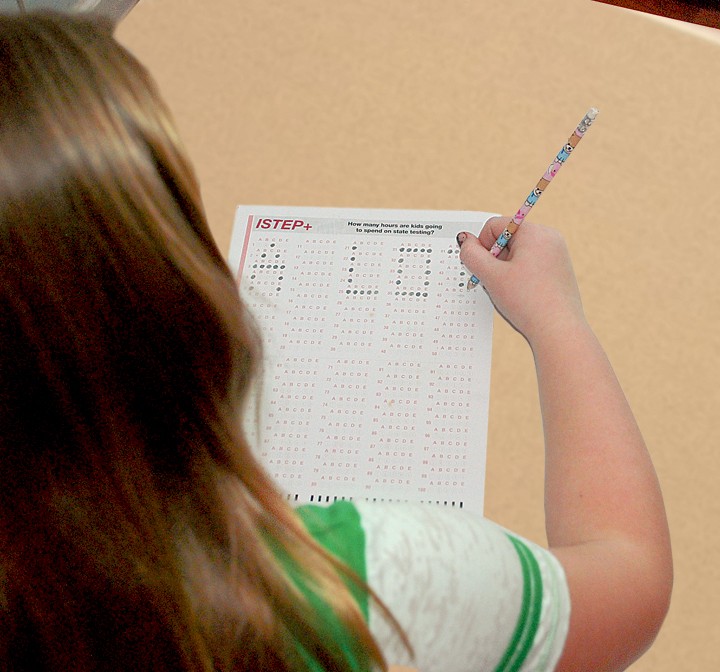Indiana students may be seeing some major changes to their ISTEP+ tests this year, though they may not be filling in as many bubbles with heavy dark marks as initially planned.
The 2015 ISTEP+ test, to be administered to over four hundred thousand students in grades three through eight, was originally expected to undergo changes that would’ve lengthened the exam by as much as seven hours, more than doubling its size from previous years.
The lengthened test in part resulted from the Department of Education’s lack of a pilot test that would’ve sampled the validity of questions on a smaller subset of students before issuing it to the entire state.
“Since the Department of Education didn’t do the pilot test, as it said it would, they are making the whole spring ISTEP+ a pilot. That means they will determine which questions will apply to the student’s score after they grade the results,” stated Marc Lotter, director of external relations for the Indiana State Board of Education. “When the State Board asked the DOE about this in September, they said it would only add a few questions. As you can see, it did a lot more than that.”
On Feb. 9, the DOE was taken to task by Gov. Mike Pence, who issued an executive order to cut the length of the exam back down.
“Parents and teachers across Indiana are stunned and outraged at this news, and so am I,” Pence said during a press conference. “I am committed to seeing this test through and to bring common sense to shorten it for Hoosier families.”
While Pence may have shortened the testing, educators aren’t sure what that means yet as they remain in flux.
“Everyone in administration roles in the buildings were bemoaning the fact that new testing was going to be so much testing,” Westfield Washington Schools Supt. Dr. Mark Keen said. “There’s a point when assessment turns over and becomes detrimental. “
In order to find ways to reduce test times, officials are in contact with nationally-recognized experts on assessments which, according to Pence’s statements, may include making the social studies and reading portions of the exam more concise. However, in spite of the executive order, final say on the length of the test still rests with state superintendent Glenda Ritz and the DOE.
“I think most people are saying enough is enough,” Keen said. “The original plan was three times the amount of testing in each grade level.”
As new changes are announced, Keen said building principals will be in communication with parents to keep them updated.
ISTEP+ is a criteria reference assessment that looks at how students are performing based on grade level standards. The test will make its assessment based on the College and Career Readiness Standards.
Back in April 2014, the state adopted the new College and Career Readiness Standards that some argue are uncommonly high. After the state pulled out of Common Core, a new test was created. The government did not give enough time to create a new test, and the students are now paying that cost with much more of their time dedicated to taking the assessment.
Keen said the new test removes the multiple choice answers and becomes a two or three step process to figure out the question.
“We’ve been doing that for a number of years now,” he said, “teaching students how to take information from different sources, put it together and figure out an answer because it’s better for them anyway.”
In the future, Keen is backing SB566, which is cosponsored by State Sen. Luke Kenley (R-Noblesville). Keen said the bill allows districts to get rid of the ISTEP+ test and purchase other accredited assessments like NWEA, which WWS has used since 2002.
“It’s shorter, it’s online and we’ve never had any technical issues and its everything we get from ISTEP+ and more,” Keen said. “It gives districts the discretion to use tests like that. It reduces testing times and costs and provides better information and quicker results.”
Keen said typical turnaround time after testing is 24 hours, which allows teachers to begin implementing changes with students in their need areas.

